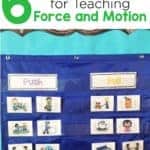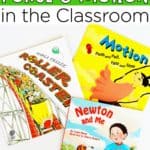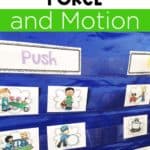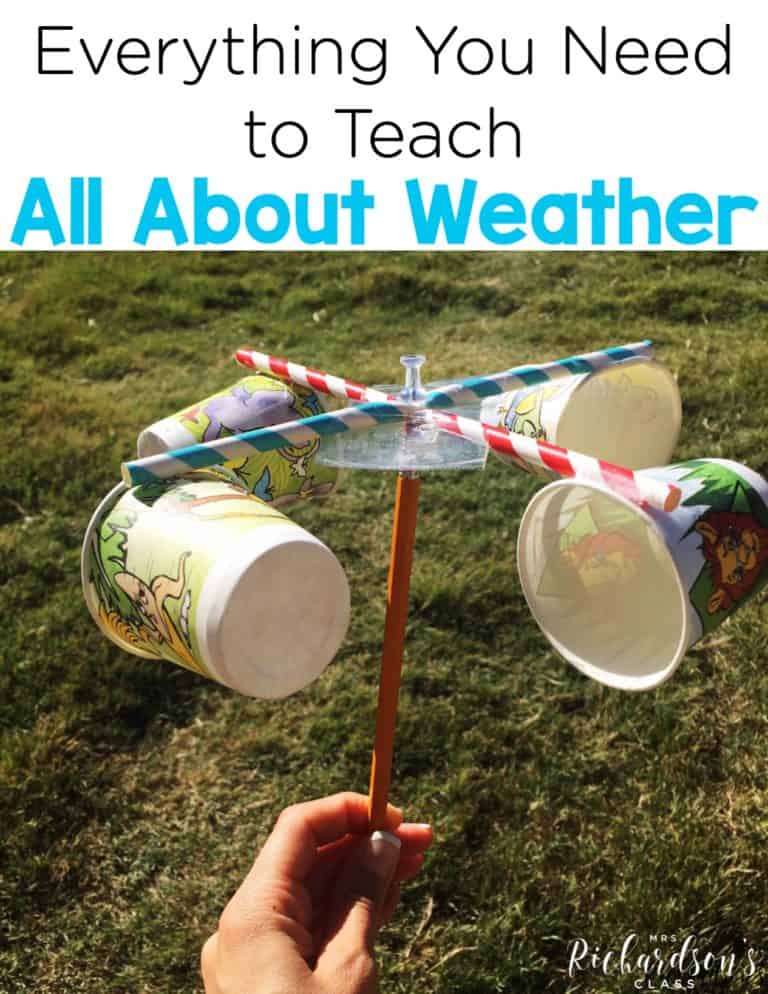


How do you feel about teaching force and motion? It was always a favorite of mine to implement. I loved leading students through a variety of force and motion activities that they loved and engaged them. But, at one point I stopped to wonder if what I was doing was just fun or actually taught students the standards they were supposed to be learning?
After digging deep into researching the standards, I decided to create my own unit that I knew would help my students experience the most success while fully covering the standards I needed to. It’s full of not only hands-on force and motion activities, but activities and lessons to drive home the content in a way students can understand and retain it.
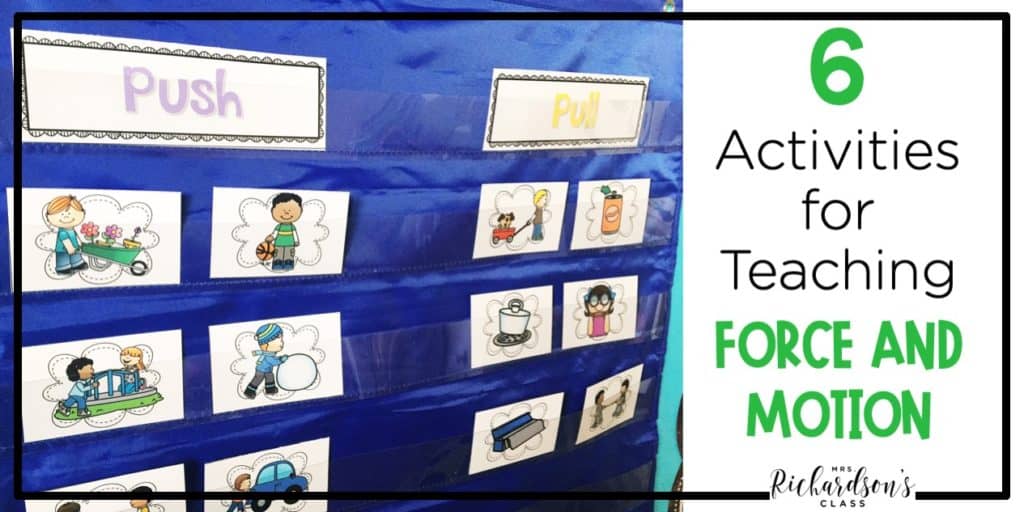
These six activities are favorites to use to successfully teach students all about force and motion.
If you visit my blog often enough, you’ll quickly learn my love for anchor charts. They are universally great to add to any unit you might teach. In science, anchor charts are one of the must-do force and motion activities. Anchor charts help visualize students’ learning, encourage students to write with you, and help connect prior learning to new learning. They also provide great support for your ELLs.
In the Force and Motion unit, I included everything you’ll need for two effective anchor charts to make with your students. One is a KWL chart and the other is a sorting chart. Both will get your students to think about their learning, process new content, and share what they have learned.
Graphic organizers and flipbooks help students scaffold their learning and think about their thinking. Writing about science has many benefits including:
Graphic organizers like bubble maps, flipbooks, and KWL charts are perfect pieces to add to interactive notebooks. If you want a full set of graphic organizers to help support you teaching force and motion, they’re included in the unit.
Hands-on activities and science experiments are always a hit in science. The Force and Motion unit has a full science experiment for you to use to guide students through the scientific method. It has everything you’ll need to implement it: teacher directions, visual directions for students, and recording pages.
There are also three movement stations you can set up for students to participate in. You can do them each in a whole group setting or have students rotate through them. I also included an activity for students to do partially at home to allow parents to be involved in learning, too.
I understand that the hands-on parts of science can sometimes be a little overwhelming, but it is so important for students to be able to apply what they have learned. If they can take the new knowledge and practice it in an activity or experiment, they’re so much more likely to retain what they have learned. Plus, they always add a ton of fun to the day!
Take students’ learning above remembering and understanding and towards applying and analyzing with sorting activities. Force and motion activities like pocket book sorts and pocket chart sorts are excellent ones for students to both apply what they’ve learned and explain the relationship between forces. These types of activities also allow you to informally assess students to be sure they are successfully learning the content they need to.
The force and motion unit has a whole group pocket chart sorting activity, an indiviual cut-and-paste sorting activity, and a pocket book sorting activity that’s perfect to put into an interactive science notebook.
Utilizing interactive read alouds is another powerful way to reinforce force and motion by integrating science topics into reading. They can build background knowledge for students before you introduce a topic like force and motion. Interactive read alouds also allow your students to engage in meaningful conversations with new vocabulary they’ll use in science. What a great way to support students’ vocabulary, especially your ELLs.
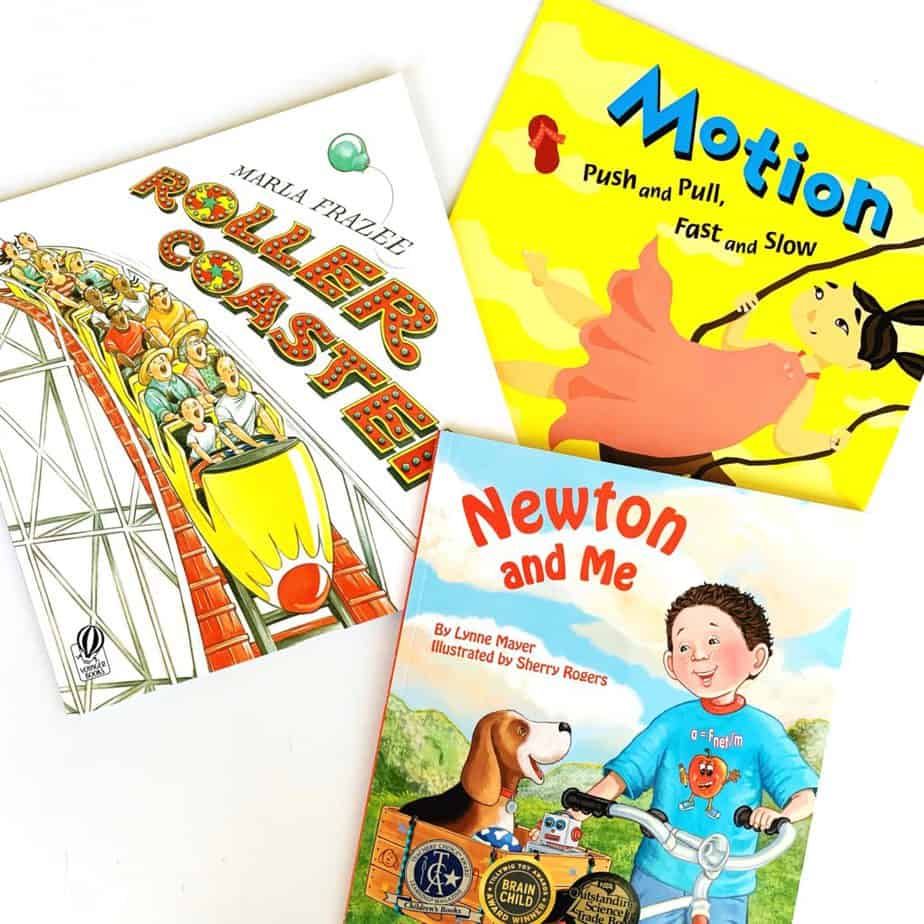
Continuing with science integration, adding literacy components like shared reading, poetry, and mini-books are the perfect force and motion activities to help squeeze science in throughout the day. The force and motion unit was thoughtfully created with a shared reading poem, phonics activities, and a mini-reader to provide you with more opportunities to talk about force and motion throughout the day.
They’re perfect to help you integrate science throughout the day to help make learning more authentic and memorable for all of your students.
If you want to include read alouds for all of your science units, I’ve already made a mega list of science read alouds for you for FREE that covers EVERY science topic for kindergarten through second grade. Click HERE to grab your free copy.
I know we all can agree that learning needs to be fun and engaging, but I always add that the activities we choose need to be purposeful and intentional. These force and motion activities have become my favorite to use for this unit. I think you and your students will love them, too.
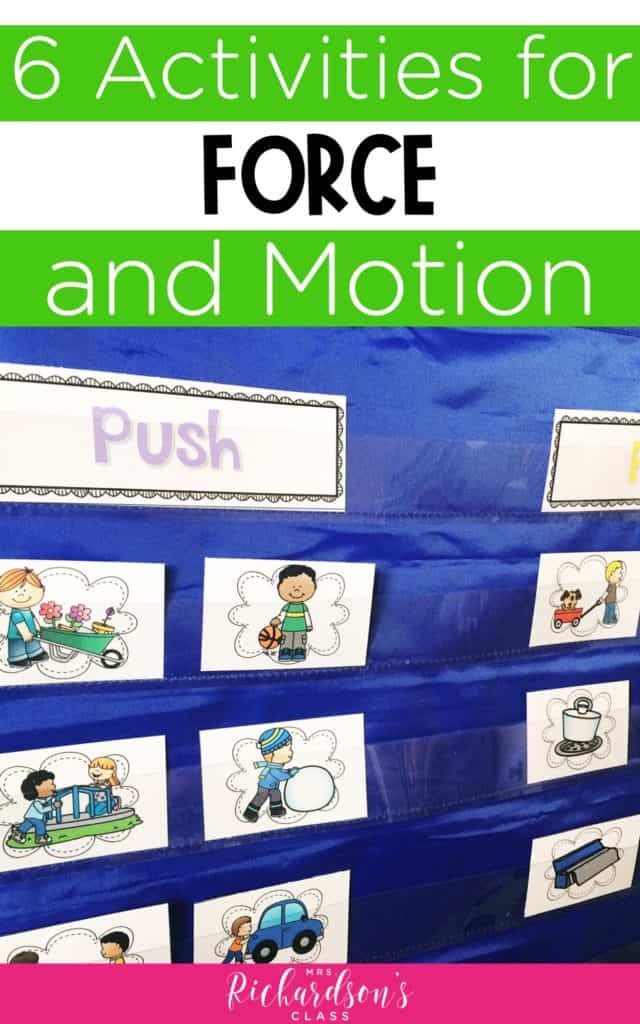
pin it
To make this unit as easy as possible for you to use, I have included a detailed teaching plan to help make lesson planning a breeze and teacher notes for each activity so you will feel confident implementing it.
Teachers who have already purchased and used this product are saying:
Check it out with the links below. Let me know if you have any questions! I’m always happy to help.
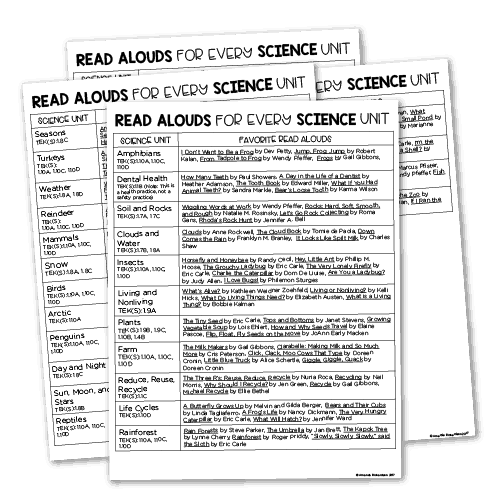

I’m a K-1 teacher who is passionate about making lessons your students love and that are easy to implement for teachers. Helping teachers like you navigate their way through their literacy block brings me great joy. I am a lifelong learner who loves staying on top of current literacy learning and practices. Here, you’ll find the tools you need to move your K-2 students forward!


| Cookie | Duration | Description |
|---|---|---|
| cookielawinfo-checkbox-analytics | 11 months | This cookie is set by GDPR Cookie Consent plugin. The cookie is used to store the user consent for the cookies in the category "Analytics". |
| cookielawinfo-checkbox-functional | 11 months | The cookie is set by GDPR cookie consent to record the user consent for the cookies in the category "Functional". |
| cookielawinfo-checkbox-necessary | 11 months | This cookie is set by GDPR Cookie Consent plugin. The cookies is used to store the user consent for the cookies in the category "Necessary". |
| cookielawinfo-checkbox-others | 11 months | This cookie is set by GDPR Cookie Consent plugin. The cookie is used to store the user consent for the cookies in the category "Other. |
| cookielawinfo-checkbox-performance | 11 months | This cookie is set by GDPR Cookie Consent plugin. The cookie is used to store the user consent for the cookies in the category "Performance". |
| viewed_cookie_policy | 11 months | The cookie is set by the GDPR Cookie Consent plugin and is used to store whether or not user has consented to the use of cookies. It does not store any personal data. |
